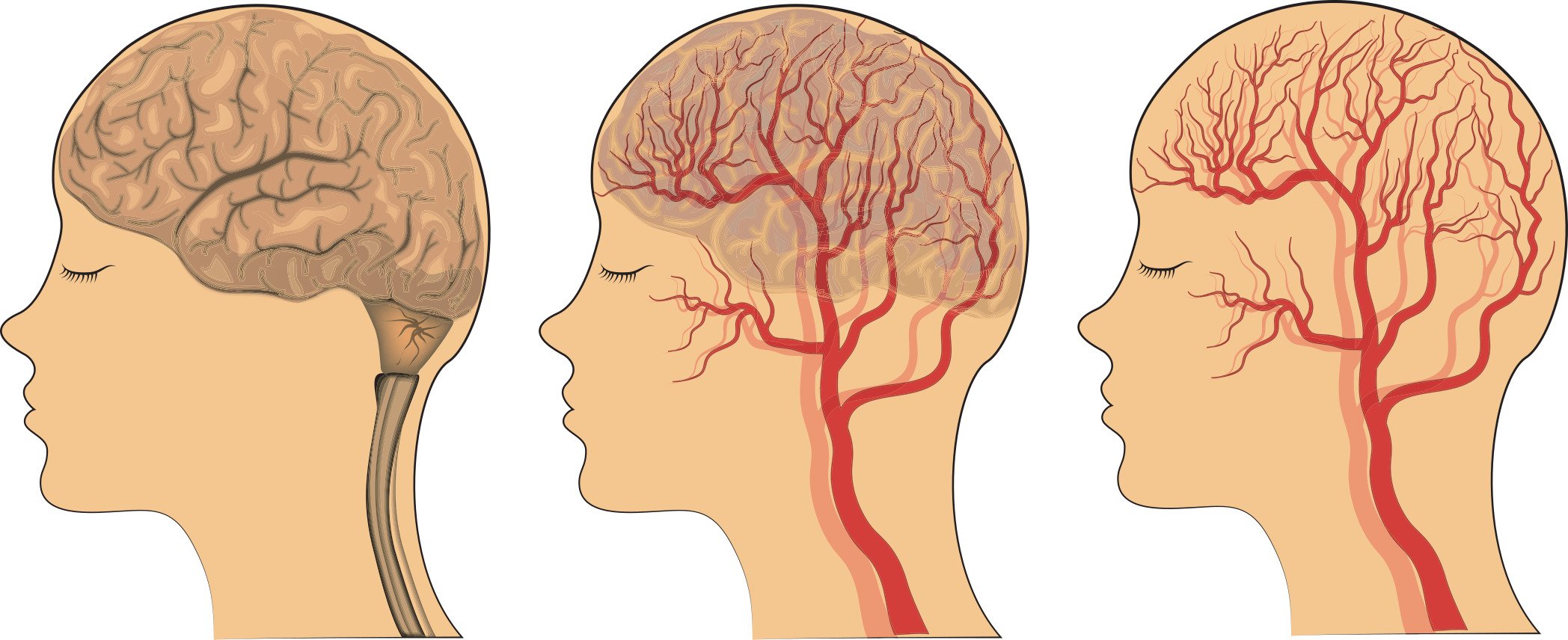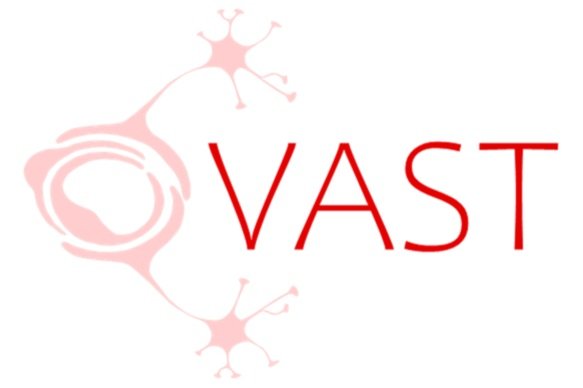
What is Vascular Cognitive Impairment (VCI), Causes, and Symptoms
To explain Vascular Cognitive Impairment, let’s first explain some important concepts: Vascular disease and Cognitive Impairment.
What is the vascular system?
The vascular system is a network of blood vessels (arteries and veins) that carry blood, oxygen, and nutrients throughout your body. This network is vital for keeping our brains working properly, as our brains use about 20% of our total blood supply!
What is (Cerebro)vascular Disease?
Vascular disease refers to any condition which affects the blood vessels. When we talk exclusively about the blood vessels in our brain, or those that supply blood to the brain, we refer to it as cerebrovascular disease (see Causes). If a blood vessel in the brain becomes damaged, this can result in an interruption of normal blood flow to the brain. This means our brain cells don’t get enough oxygen and vital nutrients which can cause the cells to be damaged or even die. This can lead to changes in thinking abilities and memory, also known as cognitive impairment.
What is Cognitive Impairment?
Cognitive impairment is a decline in mental abilities that is beyond what is expected of normal ageing. A person experiencing cognitive impairment may have trouble remembering, learning new things, concentrating, finding words, solving problems, or making decisions. In more severe forms, this affects their everyday life. The stages of cognitive impairment are defined by doctors based on the ability of a person to continue carrying out their normal activities of daily living.
Mild cognitive impairment (MCI) causes changes in thinking abilities that are noticed by the persons themselves or by family members and friends. These changes do not affect the individual’s ability to carry out their everyday activities.
Dementia is diagnosed when the decline in thinking abilities is severe enough to interfere with a persons’ daily life. Dementia is not a specific disease. It is an umbrella term used to describe a collection of symptoms that can be caused by a number of diseases that damage the brain.
What is Vascular Cognitive Impairment (VCI)?
Vascular Cognitive Impairment (VCI) is a broad concept that refers to all forms of cognitive impairment due to cerebrovascular disease. It varies from person to person, with the type and degree of cognitive problems depending on the type, location and extent of the underlying cerebrovascular disease and brain damage. The spectrum of VCI covers mild impairment where there is little impact on a persons’ daily functioning, and the more severe form called vascular dementia, where cognitive deficits are significant enough to interfere with daily social or occupational functioning. Vascular dementia is the second most common form of dementia, accounting for an estimated 15-25% of all dementia cases.
Is Vascular Dementia the same as Alzheimer’s Dementia?
No, vascular dementia and Alzheimer’s dementia are not the same, although many symptoms and risk factors overlap. Vascular dementia can occur on its own, where only changes in blood flow to the brain contribute to the cognitive decline, but this is less common. More commonly, vascular changes which contribute to cognitive impairment are present at the same time as changes which lead to Alzheimer’s Dementia. This is why patients are often diagnosed with a “mixed” form of dementia, meaning that there are multiple factors which occur at the same time and contribute to cognitive changes.
What are the Causes of VCI?
There are many different forms of vascular disease that contribute to inadequate blood flow to the brain and lead to VCI. Two of the most common (stroke and cerebral small vessel disease) are described below:
Stroke: this occurs when blood supply to a part of the brain is disrupted or blocked, resulting in brain damage. A stroke can occur due to cerebral small vessel disease. It is important to keep in mind that while someone can develop VCI after a stroke, strokes do not always cause VCI. There are three types of stroke:
Ischaemic stroke is the most common type and occurs when arteries sending blood to the brain are narrowed or blocked. This causes a lack of blood to the brain and can cause brain damage within minutes. Often the cause of this blockage is a blood clot, which can either form in the artery itself, or form elsewhere in the body but travel and become stuck on the way to the brain.
Hemorrhagic stroke is when a blood vessel in the brain leaks or even ruptures, causing damage to surrounding brain cells. There are many causes of this type of stroke (see Risk Factors).
Transient ischaemic attack (also known as ‘mini stroke’) is when there is a temporary cut-off of blood flow to the brain that resolves on its own.
Cerebral small vessel disease: this is the most common cause of VCI and is an umbrella term covering a variety of abnormalities that affect small blood vessels deep within the brain, including arteriosclerosis and cerebral amyloid angiopathy. They may be blocked (partially or completely) by clots, or the walls of the blood vessels may be damaged. This can be a consequence of untreated vascular risk factors (see Risk Factors). When these small vessels are affected, they can cause damage to areas deep within the brain.
Arteriosclerosis: this occurs when the arteries (blood vessels carrying oxygen from the heart to the rest of the body) become thick and stiff. This can restrict blood flow to organs and tissues. There are a number of factors that can cause arteriosclerosis, which can be found under Risk Factors.
Cerebral Amyloid Angiopathy (CAA): this is a condition in which specific proteins, called beta-amyloid proteins, build up on the walls of small and medium-sized blood vessels in the brain. This protein buildup damages the blood vessel walls and can cause blood to leak out (brain bleed) or cause hemorrhagic strokes.
What are the Symptoms of VCI?
There is no ‘typical’ presentation of VCI symptoms. Symptoms vary for each person, and often depend on where the vascular damage is – is it only one area or multiple areas in the brain – and how severe the damage is – how big is the area affected?
Let’s look at an example: there is damage to a part of your brain that is important for memory and remembering. If a small part of this area receives no blood flow, you may notice subtle changes in your memory like being more forgetful than usual, but your daily life might not be interrupted. However, if a larger part of this area is affected, then you may notice that these memory problems are more severe and are interfering with your life - at work, at home, etc.
A wide range of symptoms can be present, affecting mental abilities but also other areas, including the following:
Decline in thinking abilities such as: trouble concentrating, slowed thinking, difficulty with organization or planning, inability to organize thoughts or actions, memory issues such as memory loss or forgetfulness, difficulties with walking or balance,
Trouble holding urine or urinary incontinence,
Depression,
Restlessness,
Apathy or lack of motivation.
